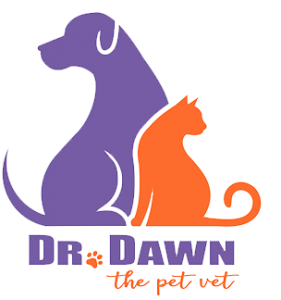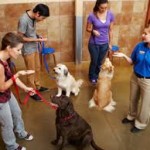There are many scenarios that will play our in your dog’s life where he or she will be introduced to other dogs. Some may be potentially permanent, as in the introduction of a new dog to your household. Most other situations involve play dates, day care, kennels where dogs co-mingle, fostering dogs, or dog parks. All have the potential to be very fun, but many pose real threats if the dogs do not get along. Best to know ways to increase your odds of a happy event. And equally important, how to recognize when things are not going well, and when to safely get out of the situation before it escalates.
Behaviorists have studied dog body language, as that is the only way we have of interpreting their communication. Much of this may be instinctual on your end, but sometimes it is not. I urge you to read the blog, as you may gain some insight into what your dog, and others, are trying to tell you, and each other.
Meet other dogs in a neutral area and start out by taking parallel walks.
Have one handler per dog, and begin walking with moderate distance between the two dogs.
Gradually get closer, if there is interest expressed by both dogs. Sometimes, if a fence separates the dogs initially, that can be another way for them to see and sniff each other without forced contact.
Keep loose leashes on the dogs. As they get closer to each other, allow them time to sniff surroundings, and then each other.
Indoor setting: physically separate dogs at first
Similar to fencing, indoor baby gates or pens can help dogs acclimate to each other’s sight and smell. This is a safe way to leave dogs unattended at first, but still keep an eye on them to see if they are interested in getting to know each other further.
So they seem interested in playing and getting to know each other, what next?
Now is the time to introduce them, on loose leashes at first. The time necessary will vary with the individual dogs and their level of interest or anxiety. Dogs that are socialized, when young, are often, but not always, better at meeting new dogs. You know your dog best, so think about the situation you are putting him into beforehand.
How to tell whether they are playing or fighting
It isn’t always easy to tell the difference between two dogs playing or fighting. Most fights are non-damaging, and those that are serious are obvious. This is intended to help recognize the not so obvious interactions. First start by recognizing body language of a happy dog.
Let’s PLAY! Signs of happy, non-threatened or non-aggressive dogs.
eyes squinty
body loose and wiggly
play bow
elbow bends
Tail medium to low
long, sweeping wag
play biting, flea biting (grooming)
paws lift, ears back
brief pauses in movements
bouncing body movements
open mouths

reciprocal-taking turns
CAUTION/ Not happy! Signs of trouble; aggression between dogs.
hackles are up (hair standing on end along back)
stiff body (instead of loose and wiggly)
repeated mounting attempts
Bared teeth
“hard eye”, and averted gaze
ears stay forward
lip wrinkle
growl
escape and avoidance behaviors, hiding
one dog is continually chasing another with no role reversal
head or tail remain high and stiff
If you’re not sure whether both dogs are having fun, try leading the more excited dog away, and see if the other dog follows playfully.
What to do in a fight:
-prioritize your own safety. It is best for you and the dogs.
DO NOT
-pick up dog
-grab collars
-put your body between the dogs
– put your hand near dog’s mouth
Remove yourself and your dog from the situation as soon as you are able.
This info and more details, including pictures and video links are on the ASPCA website.
http://aspcapro.org/sites/pro/files/aspca_webinar_introducingdogs_slides.pdf
Check it out for those details, and webinars, if you are interested.
Dr. Dawn
Please share and subscribe here















